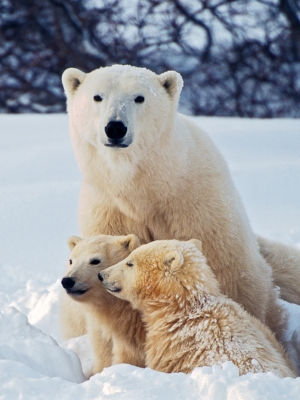Just within the last month, there has been no short supply of news headlines celebrating the arrival of baby animals at zoos across the United States; just over the last couple months, the San Diego Zoo in California welcomed a baby koala, dik-dik, and sloth bear, a gorilla was born at the Little Rock Zoo in Arkansas on March 1st, a giraffe calf was born at the Denver Zoo in Colorado at the beginning of March, and a speckled Malayan tapir calf was born at the beginning of February at the Point Defiance Zoo in Washington state.
Baby Animals at Zoos Are Born to Endure a Lifelong Prison Sentence
While almost every single news article falsely describes these zoo births as a positive event that ‘contributes to the conservation of the species in the wild,’ at Born Free USA, we acknowledge the truth: these births are nothing but the start of lifelong prison sentences meted out to undeserving animals whose only “crime” was captivating the interest of humans who use them to turn a hefty profit.
To put it simply, zoo visitors love baby animals more than almost any other attraction, which means that zoos typically see an almost immediate increase in revenue following a new birth. This trend can be attributed to a few different factors, including selling more admission tickets, increased social media attention (often including pictures or video footage of the babies), more merchandise sales (usually involving stuffed baby animals), and special events centered around the new birth.
Zoo Breeding Programs Contribute Nothing to Wildlife Conservation
What zoos fail to mention is that the vast majority of these animals will never spend a single day in the wild. Most zoos accredited by the Association of Zoos and Aquariums (AZA), the self-proclaimed “gold-standard” of zoos in North America, are involved in the breeding program known as the Species Survival Plan (SSP), which is “designed to ensure the long-term survival of genetically viable populations of threatened or endangered species within AZA-accredited zoos and aquariums.” To clarify, this program works to ensure the long-term survival of animals in captivity; not in the wild in the habitats they evolved to occupy freely.
Zoo Breeding Programs Do Not Take Animals’ Well-being into Consideration
The SSP often prioritizes moving animals to different participating facilities around North America to ensure that the genetic diversity and breeding potential of the animals is successful. Consequently, this system neglects the health and welfare of the animals involved by separating family groups and disrupting the natural structure of highly social animals who typically spend the first two years (or sometimes their entire lives) with their mothers, like many primate species and elephants. Female elephants remain with their mothers and natal herd for their entire lives, whereas the males can spend up to 19 years with their mothers before venturing out to find a mate. But, because zoos prioritize creating more lives in captivity to generate more profits, this crucial bonding time is almost never honored in zoos. According to zoo records, many animals are moved three to four times during their lives in captivity, with some animals being moved up to ten times between different facilities, occasionally even between different countries across the world.
Measures taken by the SSP to facilitate births in captivity have also not proven to be particularly successful, as the infant survival rate for some species is lower in captivity than in the wild. Sadly, the overall infant mortality rate for elephants in zoos has been documented at a high 40%, nearly triple the rate of free-ranging Asian and African elephants. The rate of stillbirths in elephants is also higher in captivity than in wild populations.
Transferring animals so frequently between facilities can also have devastating impacts on the animals. Besides the distress that often occurs from separating animals that have formed close emotional bonds with each other, moving animals can increase the chances of disease spreading and instances of aggression or attacks in a group. For example, a major cause of infant mortality among captive Asian elephants is due to hemorrhagic disease caused by Elephant Endotheliotropic Herpesvirus (EEHV): an infectious herpesvirus only found in elephants and one of the most fatal diseases in captive elephants worldwide. Several captivity-related factors have been linked to a higher disease risk in captive elephants, including high stress levels due to early weaning; EEHV being shed during other birth events in the herd; and transfers in/out of the group or between facilities. Zoos with the most active breeding programs presented an exceptionally high overall offspring loss due to EEHV-HD: up to 50% of the total offspring.
The Birth of a Baby Animal at a Zoo is Not Happy News
Thus, all things considered, babies at zoos are anything but good news. It is our hope that, after reading this blog, you no longer feel excited about new births in captivity, but rather recognize them for the tragedies they are. To help us expose zoos for what they truly represent, please take a pledge to stop visiting all facilities that keep wild animals captive for human entertainment. The most effective conservation work happens in these animals’ natural environments, not behind bars.
Keep Wildlife in the Wild,
Devan
Dear Reader,
We are a nonprofit committed to wildlife conservation, welfare, and rescue. Making resources free and widely distributed, like our news items, is an important part of our mission. If you found this article helpful, enjoyable, or enlightening, please donate to help keep these resources available, and Keep Wildlife In The Wild.
Thank You,
The Born Free USA Team

 Dear Reader,
Dear Reader,